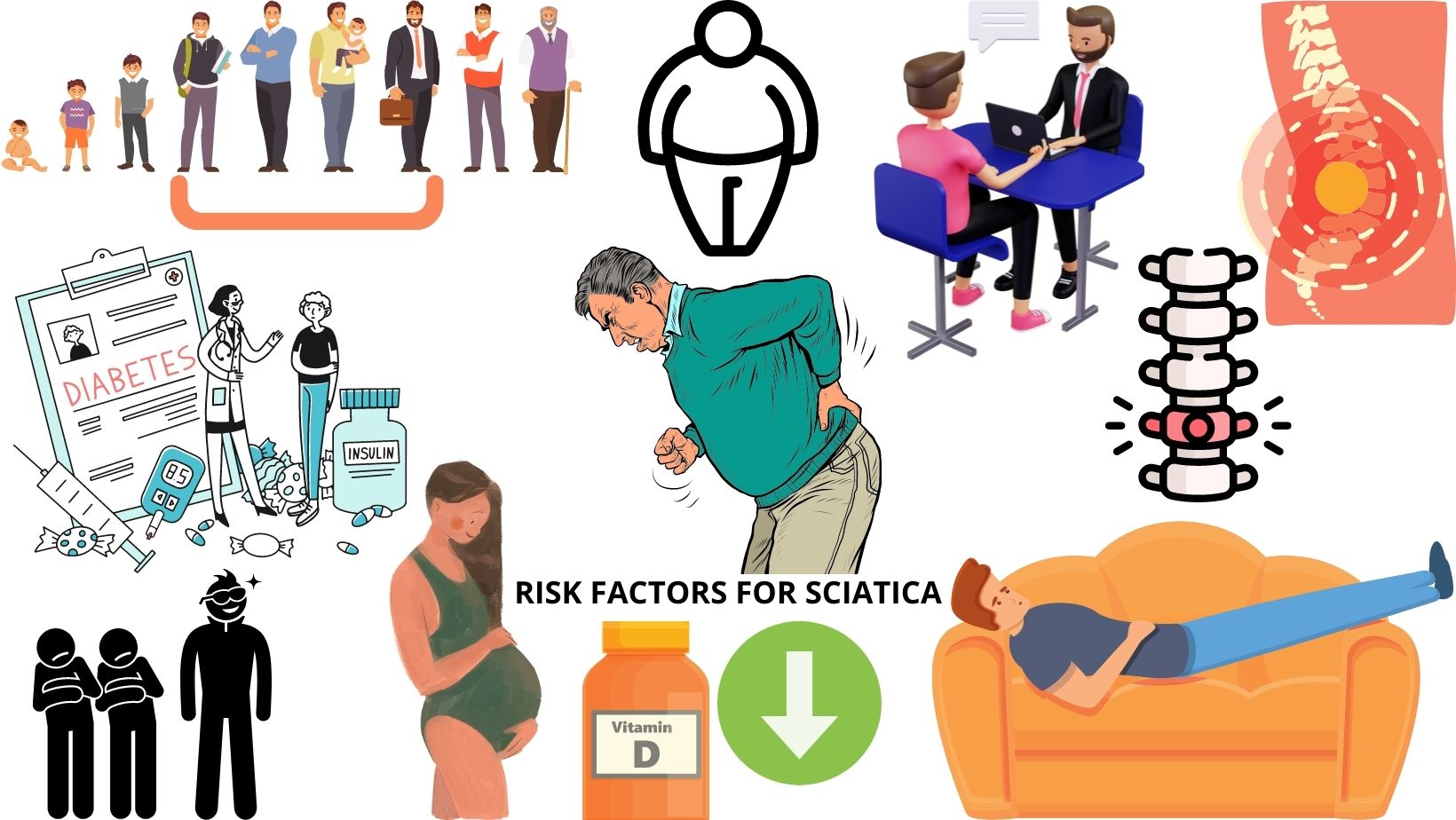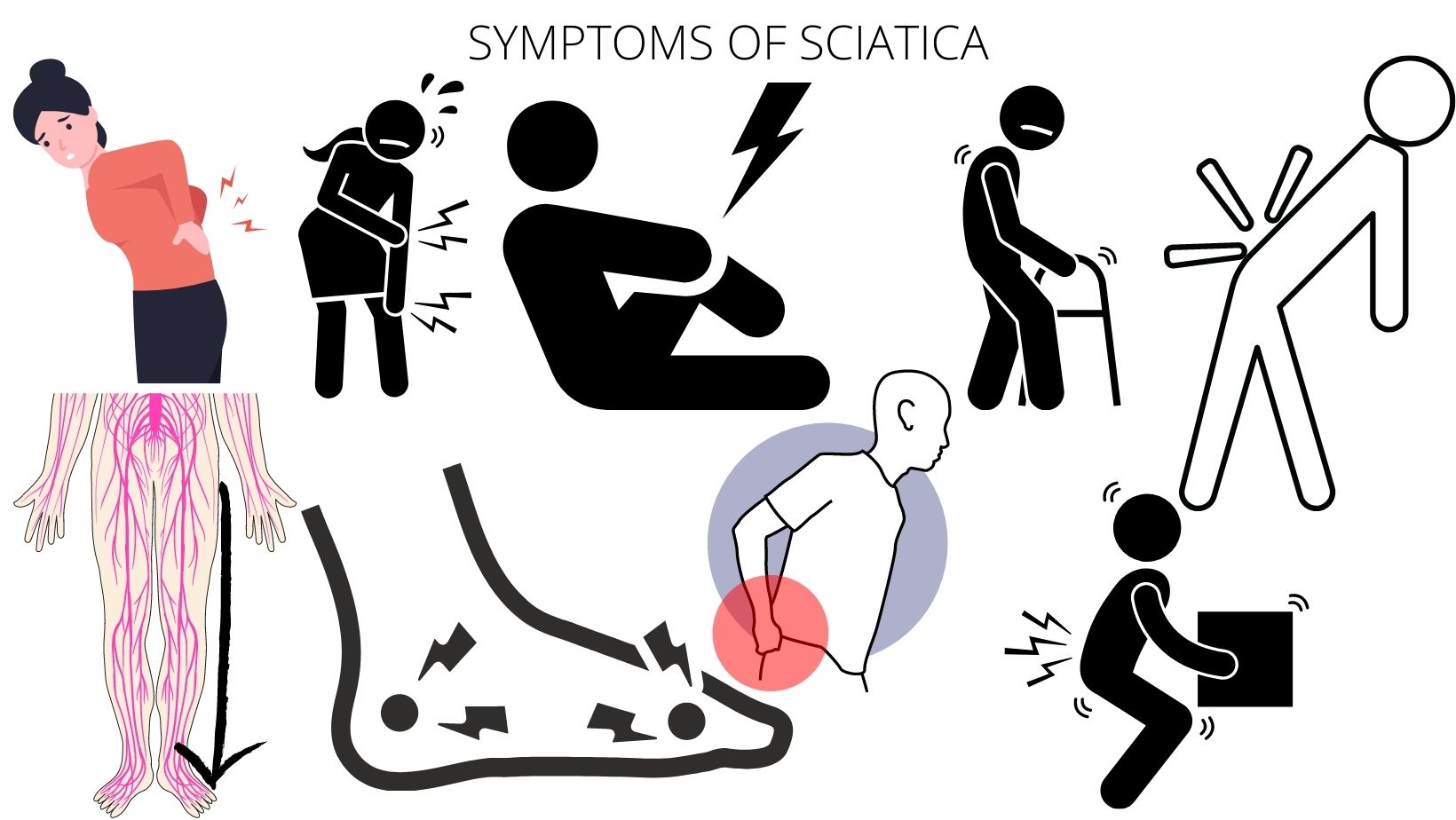THE DEFINITIVE GUIDE FOR THE TREATMENT OF SCIATICA
WHAT IS SCIATICA?
Sciatica is a common type of pain and this term is used to describe nerve pain in the legs that is caused by irritation and /or compression of the sciatic nerve.
Sciatica usually affects only one side of the lower body, the pain extends from the lower back all the way through the back of the thigh and down through the leg and the pain may extend to the foot or toe.
WHAT ARE THE RISK FACTORS FOR SCIATICA?
- Age -people between 30 to 50 are more prone to sciatica
- Diabetes can cause nerve damage
- Weight - overweight persons are prone because excess weight puts pressure on your spine
- Pregnancy- pregnant lady is also prone to sciatica because hormones produced during pregnancy can cause ligaments to loosen up and stretch which causes back pain.
- Occupation -work in which the back is twisted more, carrying heavy loads, or driving a motor vehicle for long periods of time may contribute to this
- Sedentary lifestyle -persons who lead a sedentary lifestyle or those who have a habit of long sitting are more prone to sciatica because long sitting causes pressure
- Degenerative arthritis of the lumbar spine - is a chronic disorder that damages the cartilage and tissues surrounding the joints
- Any trauma or injury to the spine - any physical trauma such as an accident can lead to sciatica
- Smoking
- Deficiency of Vit D -deficiency of Vit-D lead to weakness of bone
- Tall persons are more prone to sciatica
WHAT ARE THE COMPLICATIONS OF SCIATICA?
The major complication of the sciatica is permanent nerve damage.
WHAT ARE THE SYMPTOMS OF SCIATICA?
- The main symptom of sciatica is pain and pain can be felt anywhere in the course of the sciatic nerve, and this pain may start from the hip joint and transmit up to the foot
- Lower back pain
- Burning and tingling sensation in the leg
- Weakness, numbness in the leg or foot
- Difficulty in motions
- Maybe pain becomes constant on one side
- Shooting pain at the time of standing
- Postured induced pain symptoms of sciatica may worse during some posture such as sitting, trying to stand up, bending the spine forward, lying down, coughing, and twisting the spine.
- Pain in the hip.
WHAT ARE THE CAUSES OF SCIATICA?
The most common cause of sciatica is herniated disc or slipped disc that causes pressure on nerves.
The spine is made up of three parts
- A vertebrae
- Nerve
- And disc
The disc is made up of cartilage, which is a strong and resilient material, the cartilage acts as a cushion between each vertebra and allows the spine to be flexible. A herniated disc occurs when it is pushed out of place and puts pressure on the sciatic nerve.
Another cause of sciatica is
- Lumbar spinal stenosis- in this condition the spinal cord become narrow in the lower back
- Spondylolisthesis-in this condition disk slip forward over the vertebrae below it
- Tumors-the presence of tumors in the spine may compress the spine
- Infection-infection may affect the spine
- Cauda equina syndrome is a rare but serious condition that affects the nerve in the lower part of the spinal cord. It requires a medical condition
- Spinal stenosis-this condition leads to narrowing of the spinal cord
DIAGNOSIS OF SCIATICA
- Physical examination
- Joint examination
- Imaging tests
Physical examination includes some findings such as
- A localized pain in the low back, buttock, thigh, and leg
- The response to leg movements that elongate the nerve
- The response to certain stimuli such as gentle pressing of the toes and calf region.
Joint examination
- Straight leg raise (SLR)test -This test is done to determine if the patient has true sciatica, as the leg pain is very common and may occur due to any other reason also.
- Slump test - this test is also done for checking the involvement of the sciatic nerve
Imaging tests for sciatica
- MRI -MRI is helpful to know about the sciatic nerves, surrounding soft tissue, facet, joint inflammation, tumors, and herniated disc.
- Discogram -discogram is helpful in determining abnormalities in a vertebral disc.
TREATMENT OF SCIATICA
Conventional treatment for sciatica is painkillers, anti-inflammatory drugs, muscle relaxants, physiotherapy, and other treatment available like acupressure, physical therapy, or chiropractic
But all these treatments are temporary but homeopathy can cure the condition permanently.
MANAGEMENT OF SCIATICA
The management of sciatica is mainly focused to relieve pain and keeping active as possible
- Try to alternate Hot and cold applications to reduce pain.
- Do exercise and light stretching (as recommended by a physiotherapist) stretching exercise might relieve nerve root compression.
- Never sit for a long period because it increases the pressure on the disc and may worsen the condition
- Stop alcohol and smoking
- Always eat a diet that is rich in calcium and Vit D because it gives strength to the bone
HOMEOPATHIC MANAGEMENT
Homeopathy is a very advanced science, through homeopathy we can treat acute and chronic sciatica. Homeopathic medicine is natural and safe and works on the root cause of sciatica for complete, effective healing and cure. Some widely used medicines for sciatica are:
- Colocynthis
- Magnesia phosphorica
- Rhus tox
- Cotyledon
- Chamomilla
- Gnaphalium
- Aesculus
DO'S AND DON'TS
Do’s
- Keep active and try to take small breaks in between your sitting hours.
- Eat a healthy diet, a diet that is rich in calcium and Vit D
- Keep hydrated
- Hot and cold packs
- Do changes in lifestyle such as prolonged sitting or sedentary lifestyle
- Maintain healthy weight
Don’t
- Avoid jerking, bouncing, or twisting during the stretch
- Avoid heavy weight lifting
- Avoid prolonged bed rest
- Avoid sitting for a long time
- Avoid smoking and alcohol


Comments
We have received your comment , Thank You !